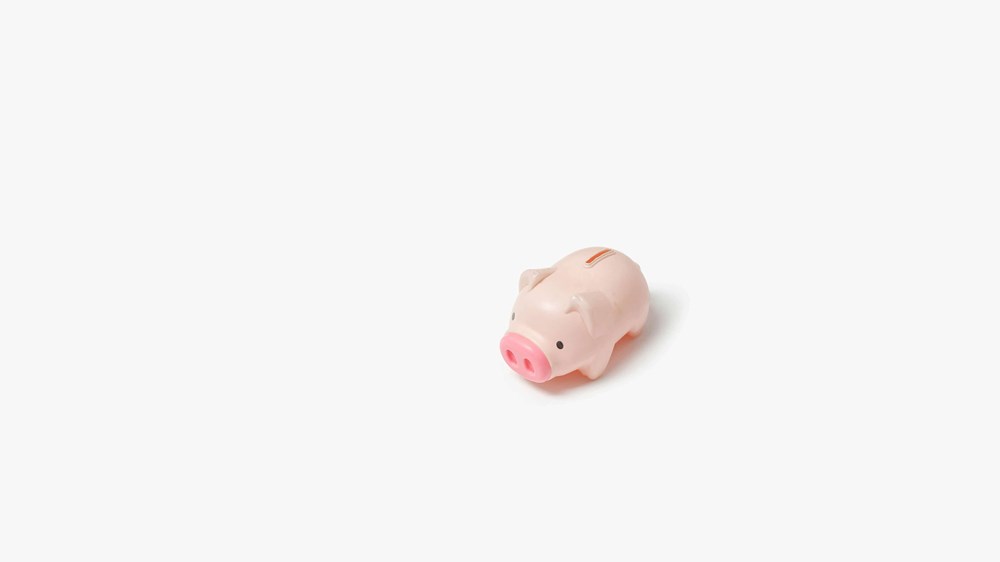Whether it’s rewarding your child for chores, teaching them the value of money, or helping them save for something special; pocket money can serve as a powerful tool for fostering good financial habits.
But determining the right amount isn’t always straightforward.
Read on to explore the average pocket money in the UK, and the pros and cons of allowances. Plus, some innovative ways to teach your child about long-term financial growth through investing.
- Pocket money: a personal choice
- Average pocket money in the UK
- Importance of pocket money
- Disadvantages of giving pocket money
- Teach them long-term growth by opening a kid’s investment account
- Why choose Wealthify’s Junior Stocks and Shares ISA?
- Conclusion
Pocket money: a personal choice
Pocket money isn’t a one-size-fits-all decision. Every family has different financial circumstances, values, and priorities.
And what’s most important is that it aligns with your household’s budget and money goals.
But if you can afford to give your child a regular allowance, pocket money offers more than just spending power; it’s an opportunity to teach children about financial responsibility.
By managing their own money, kids can learn essential skills such as saving, budgeting, and making thoughtful spending choices.
However, the amount you give should be realistic for your situation. Whether it’s a few pounds a week or a more substantial allowance, there’s no universally correct amount. It’s about what works for you and your child’s needs.
Average pocket money in the UK
To help you benchmark your decision, here’s a look at the average pocket money given to children in the UK according to NatWest bank [1]:
These figures provide a general idea of what other parents are giving, but remember, it’s perfectly fine to give more or less depending on your financial situation or what you feel is appropriate.
Your essential outgoings, wages, geographical location: these all have an impact on what you could consider the right amount to choose.
Not to mention the experience you had with money as a child; maybe you didn’t get any pocket money, but would have valued it. Perhaps you got an allowance for completing specific chores. Or your childhood friend’s parents used a much better tactic for instilling good money habits than you experienced, and you now want to pass the same along to your child.
Whatever the reason, and whichever way you decide to give it, the fundamental remains — giving children a safe space to learn about money should also help them build their financial confidence, and in turn, help them make better financial decisions later in life.
Importance of pocket money
- It teaches budgeting skills
Managing pocket money helps children understand the importance of saving for larger purchases rather than spending impulsively.
They also get a taste of how long it takes to build up the money. And to experience the absence of it if they choose to spend it all at once. - Creating a work-reward connection
Introducing a pocket money chart where children earn money for completing chores can teach them the value of hard work.
It also gives them the opportunity to earn even more if they take on extra chores when they are saving for something specific (and at those times, you might find it’s worth every penny!). - It helps them safely navigate the emotional side of money
Fast forward to adulthood, and it’s common to hear someone say they won’t look at their bank balance, that they impulsively shop to make them feel better, or excessively use their credit card. Money can be an emotional thing for many, and it doesn’t always lead to making the most logical choices with it.
Gently guiding your child through the (sometimes negative) emotions associated with money while they’re young could help them master their financial decision-making. Instilling financial independence - Earning and managing their own money fosters a sense of responsibility
You could take this further by sitting down with them to show how you budget your money for the month as a guide; giving them the opportunity to see the budget method you follow (such as the 50/30/20 rule), in action.
Some parents even start to charge back a small amount of rent once the child is close to 16, to start preparing them for their future bills and outgoings. Or encouraging them to get a part-time job as soon as they’re allowed to. - Building their confidence
Allowing kids to make their own spending decisions – even if they’re not always perfect – can boost their confidence and decision-making skills. Explaining to them early on about the power of compounding, savings accounts, and investing over a long time could be key pieces of information at this early stage of life.
Disadvantages of giving pocket money
While there are many benefits to giving pocket money, it’s worth considering some potential downsides too:
- Chores might not get done
If a child receives their allowance regardless of whether they complete their tasks, it may reduce motivation to help around the house. Being strict about their responsibilities on the chore chart could help avoid this. - Pressure to increase allowance
As children grow older, their expectations for pocket money may grow too. This can be a valuable teaching moment about inflation and the value of money over time. - Transitioning to digital money
With the rise of pocket money apps and kids’ bank cards, parents may need to navigate the shift from cash to digital funds — a change that may require extra guidance.
Parents might want to consider starting with coins at a younger age, letting them experience going to the bank to make a deposit, checking their bank book, etc. Then, graduating to digital funds later on. Showing them how much easier it is to spend on a debit card, and so forth.
Teach them long-term growth by opening a kid’s investment account
Pocket money can do more than teach day-to-day money management — it can also be a gateway to long-term financial growth.
Consider introducing your child to investing by opening a Junior Stocks and Shares ISA and helping them understand the projected value of it when they turn 18.
Here are some ways to encourage them to start:
- Match contributions: for every pound your child saves or invests, consider matching it to encourage their efforts when you deposit it into their Junior ISA for them.
- Allocate birthday money: instead of spending all their birthday money on toys, encourage them to set aside a portion for investing.
- By teaching decision-making: work together to decide which funds stay in a piggy bank/ traditional savings account, and which funds go toward investing for the future.
Investing can teach your child about the power of compound growth and the benefits of thinking long-term. It’s a life skill that could set them up for a more secure financial future. You can also take the opportunity to educate them on the highs and lows of the stock market, why this is normal to see, and why investing over a long period is usually a strategy to ride out the short-term ups and downs.
Please remember that with investing, capital is at risk. The value of investments can go down as well as up, and you could get back less than invested.
Why choose Wealthify’s Junior Stocks and Shares ISA?
At Wealthify, we’re proud to have won Best Junior ISA six years in a row at the Personal Finance Awards. Our Junior Stocks and Shares ISA is designed to help parents and children start their investment journey with ease.
- Ethical investing options: teach your child the importance of aligning their investments with their values.
- Easily invite family to contribute too: Invite grandparents, aunts, and uncles to contribute with a personalised note for special occasions. Perhaps your child would prefer for those gifts to go into the Junior ISA and to keep their cash allowance from you to practice short-term skills with.
- They get a generous tax-free allowance: up to £9,000 can be invested for your child every tax year, completely free of capital gains tax or income tax (no matter how much the pot builds up to). Giving your child a strong financial head start.
Explore our Junior ISA options today and see how we can help your child’s money grow.
Conclusion
Deciding how much pocket money to give your child is a personal decision, but it’s an important one. Beyond the weekly allowance, pocket money can teach children valuable lessons about budgeting, saving, and even investing for the future.
Why stop at teaching your child how to manage their pocket money when you can also help them grow it? Open a Junior Stocks and Shares ISA with Wealthify today and take the first step toward building a brighter financial future for your child.
Wealthify does not provide financial advice. Please seek financial advice if you are unsure about investing.
Please remember the value of your investments can go down as well as up, and you could get back less than invested.
Your tax treatment will depend on your individual circumstances, and it may be subject to change in the future.
References:
1: https://roostermoney.com/how-much-pocket-money-should-i-give-pmi-2025/



